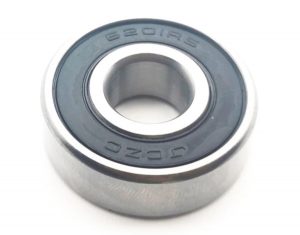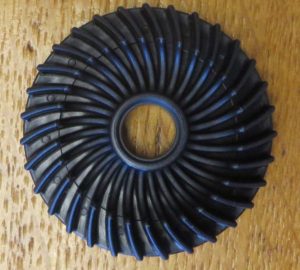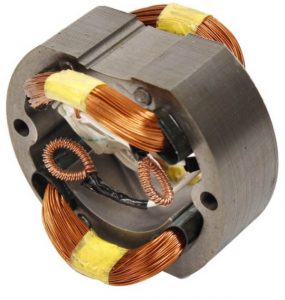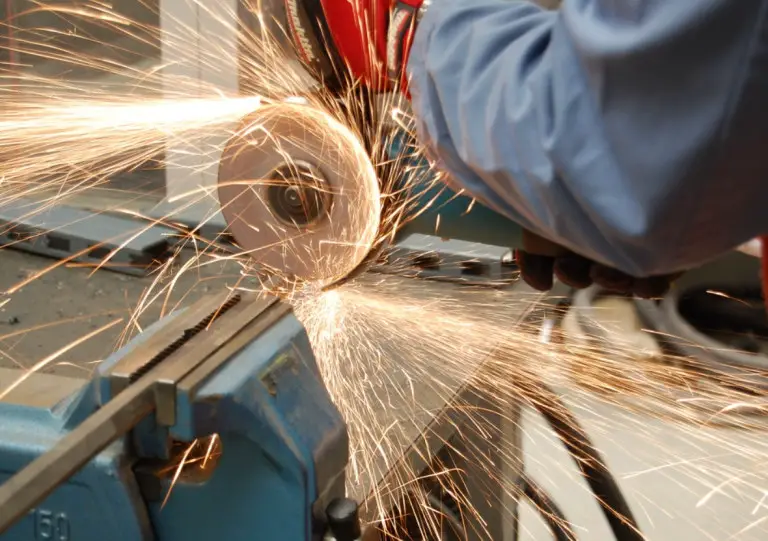Angle grinder overheating is a common problem when performing high-demanding jobs with this power tool. If left uncared, your tool can be damaged and out of use or even cause severe accidents to you and the people around you.
In this article, I will help you understand the reasons that cause overheating and what to do when your grinder experiences this problem.
Contents
Angle Grinder Overheating: Signs To Know
An angle grinder is an electrical device with a powerful motor and uses resistance for its operation. Thus, it will generate a specific amount of heat for most applications.
To maintain a cool operation inside, there is a strong inner fan to blow fresh air from the trigger switch area and pass the brushes, the windings to prevent overheating and motor burnout. But there are times your tool experiences overheating or burnout when being used over its normal limits, like when grinding concrete floors.
So, when is an angle grinder considered too hot or overheated?
As soon as you notice your grinder has an annoying smoking smell (like the brush covers melt) or is too hot to hold when performing difficult jobs comfortably, it might experience overheating.
In this case, you should check your tool immediately, as this problem can pose risks of motor burnouts or unwanted accidents to you.
Why Is My Angle Grinder Overheating?
There are many reasons that lead to angle grinder overheating. For example:
- The armature gets overheated due to the blocked cooling ports, damaged fan, heavy dust build-ups, or working in a hot environment;
- Seized bearings;
- Broken cooling fan;
- Broken carbon brushes;
- Dirty or damaged fields;
- Poorly lubricated gears.
How Do You Stop A Grinder From Overheating?
After troubleshooting the above signs of this problem, you should stop using the grinder, then let it spin freely to cool down at its high speed for 5-10 seconds. As experts said, the grinder can get hot many times with no serious consequences if cooled down quickly.
But if this quick cool down doesn’t work, you should turn the tool off and let it rest for a while. Measure its cool-down time and check to know if the same problem happens again when using it for a short period.
You should also verify if the motor is in good condition or not. If you diagnose a fault, bring your tool to the service center or check the following parts of it to repair it at home with less time and cost.
Armatures

The armature is the power-producing unit of the motor.
The reason the armature gets overheated can be the broken cooling fan, heavy dust accumulation, blocked cooling ports. This problem can also result from working in a hot environment.
When you realize your grinder’s armature is overheated, you should clean it with an electrical contact cleaner first. Then, check for damaged marks and missing bars (inside the commutator) and replace the armature if there is any missing bar.
Use a 600-grit aluminum oxide sandpaper to clean the commutator and a plastic scribe to clean dust and debris between the bars.
Next, you should make a 180-degree test or a reading test using an ohmmeter to indicate whether the armature is in good condition or not. If it is bad, replace it with a new one. If the armature is still workable, you can install it immediately and continue using your tool.
Bearings

A seized bearing on the shaft of the tool’s armature will generate a lot of heat and cause dramatic heat rise.
You should remove the bearings first to inspect whether it is seized or not. Try to spin the bearings with your hands. If there is a bearing that doesn’t spin, it has been seized and needs to be replaced with a new one.
Fans

The fan on an angle grinder keeps the motor and internal parts cool during all operations. When the fan is out of use, there will be no cool air ventilation inside this powerful tool, leading to overheating.
If you notice that the fan has been broken, you should replace it with a new one. Since the fan’s position on different grinders might differ, its repair procedure might vary.
If the fan is located at the front of the armature shaft, you have to replace the whole armature. But if it is located on the armature’s shaft of the tool’s rear, you can disassemble it and just replace it.
Carbon Brushes

On angle grinder models using a brushed motor like Dewalt DWE490-GB, the carbon brushes use their rotation movements to generate electricity and rotate the attached discs/attachments.
Most angle grinders on the market have a dust extraction or dust shroud to pull small particles out of the tool. However, if your tool is not on this list, the carbon brushes can be accumulated with thick dust and debris and wear down quickly. At that time, they will generate more current or hot sparks and make the motor overheated.
If you are using some angle grinders of Bosch like GWS8-45, there is the Service Minder feature to let you know when it’s time for carbon brush replacement by automatically stopping the tool. Thus, there will be less chance your tool can start a fire or explosion.
Furthermore, you can use a grinder with a brushless motor like Ryobi P423 to lessen your brush replacement cost and time.
You can check whether the carbon brushes are broken or not by disassembling them from the tool. On some models, you have to remove the power cover of the tool, locate the brushes, then release the tension springs to get the brushes out of the tool.
On other models like Milwaukee 6142-30, you can instantly access the brushes by removing their external brush cover/window (which is located at the side of the tool) with a screwdriver.
After taking the brushes out, check if the brushes have any uneven wear, damages, or weak springs. If the brushes are below or equal to 1/8 inch, they need a replacement. If they are still in good condition, clean them lightly with sandpaper and an electrical cleaner, then reinstall the brushes on your tool to resume your work.
Fields

The field on an electromagnetic tool like an angle grinder is an electromagnet that generates a magnetic field. Over time, this part is covered with heavy dirt and debris, preventing it from evenly dissipating heat. If left uncared, this problem could lead to severe damages like shorting out, tool failure, or smoke.
Remove the field from the gearbox, clean it with an electrical cleaner, then check for excessive sparking and burn marks. If there is any sign of damage, you should replace it with a new one.
You can also use a simple test to check the field’s working condition. Set the multimeter to the ohmmeter and place a cord on each side of the field. If the result is infinity, the field is bad and needs to be replaced.
Gears

You should regularly lubricate the tool’s gear with oil when using your tool. When the gears have no lubrication, they will become dry and transfer more heat to the motor through the armature shaft.
Take the dry gears out of the gearbox’s housing, wipe away the old grease and relubricate with new grease. Then, reinstall the spindle housing to the gearbox housing.
Final Words
Understanding the causes and solutions to angle grinder overheating helps you make a quick DIY repair at home before spending more time and money to get it fixed at the repair center.
To prevent overheating or other problems while using an angle grinder, you should regularly clean and maintain your tool to preserve its peak performance and appearance for a prolonged period and minimize serious accidents or tool damages.
